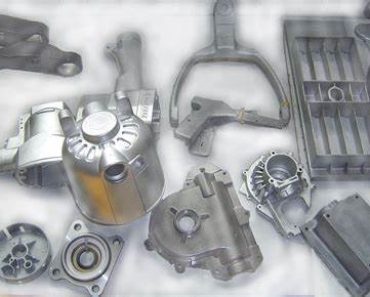In the intricate world of healthcare, where patient safety and treatment efficacy are paramount, the quality assurance of medical components stands as a cornerstone of excellence. From surgical instruments to implantable devices, medical components play a crucial role in diagnosing, treating, and managing a wide range of medical conditions. Ensuring the safety, reliability, and performance of these components is essential to maintaining the highest standards of care and improving patient outcomes. In this comprehensive exploration, we delve into the y-site iv picture importance of quality assurance in medical components, the key principles and practices involved, and the transformative impact it has on patient treatment and healthcare delivery.
The Importance of Quality Assurance
Quality assurance in medical components encompasses a comprehensive set of processes, procedures, and standards aimed at ensuring that products meet the requirements for safety, efficacy, and regulatory compliance. In the context of healthcare, where the stakes are high and errors can have life-threatening consequences, quality assurance plays a pivotal role in safeguarding patient well-being and maintaining public trust in medical interventions.
The primary objectives of quality assurance in medical components include:
- Ensuring Patient Safety: Medical components must be designed, manufactured, and distributed in a manner that minimizes the risk of harm to patients. Quality assurance practices help identify and mitigate potential hazards, defects, and risks associated with the use of medical components, thereby enhancing patient safety and reducing the likelihood of adverse events.
- Ensuring Product Reliability: Patients and healthcare providers rely on medical components to perform consistently and predictably under diverse clinical conditions. Quality assurance measures, such as rigorous testing, validation, and monitoring, help assess the reliability and performance of medical components throughout their lifecycle, ensuring that they meet or exceed established standards for quality and durability.
- Ensuring Regulatory Compliance: Regulatory agencies, such as the Food and Drug Administration (FDA) in the United States and the European Medicines Agency (EMA) in Europe, set forth stringent requirements for the design, manufacture, and distribution of medical components. Quality assurance practices ensure that products adhere to applicable regulations, standards, and guidelines, facilitating market approval and regulatory compliance.
Key Principles and Practices
Quality assurance in medical components is guided by several key principles and practices:
- Risk Management: Identifying, assessing, and mitigating risks is a fundamental aspect of quality assurance. Manufacturers conduct risk assessments to identify potential hazards and failure modes associated with medical components, implement risk mitigation strategies, and monitor the effectiveness of risk controls throughout the product lifecycle.
- Design Controls: Quality assurance begins with robust design controls that govern the development and validation of medical components. Design control processes encompass requirements management, design verification and validation, design transfer, and design changes, ensuring that products meet user needs, specifications, and regulatory requirements.
- Manufacturing Processes: Quality assurance extends to manufacturing processes, where adherence to Good Manufacturing Practice (GMP) standards is essential for ensuring product consistency, traceability, and control. Manufacturers implement quality management systems, process validation protocols, and quality control measures to monitor and optimize manufacturing processes and minimize variability.
- Testing and Validation: Comprehensive testing and validation protocols are integral to quality assurance in medical components. Manufacturers conduct a range of tests, including mechanical testing, biocompatibility testing, sterilization validation, and shelf-life studies, to assess product performance, safety, and reliability under simulated and real-world conditions.
- Post-Market Surveillance: Quality assurance continues beyond product release through post-market surveillance activities, such as complaint handling, adverse event reporting, and field corrective actions. Manufacturers monitor the performance of medical components in clinical practice, respond to feedback from users and stakeholders, and take corrective and preventive actions to address emerging issues and improve product quality.
Transformative Impact on Patient Treatment
The transformative impact of quality assurance in medical components is profound and far-reaching, shaping the landscape of patient treatment and healthcare delivery in meaningful ways. By ensuring the safety, reliability, and performance of medical components, quality assurance:
- Enhances Patient Safety: Quality-assured medical components minimize the risk of adverse events, infections, and complications, thereby enhancing patient safety and reducing healthcare-associated harm.
- Improves Treatment Outcomes: Reliable and high-quality medical components contribute to more accurate diagnoses, effective treatments, and optimal clinical outcomes for patients across diverse medical specialties and conditions.
- Increases Trust and Confidence: Healthcare providers and patients alike rely on quality-assured medical components to deliver safe, effective, and reliable care, fostering trust, confidence, and satisfaction in the healthcare system.
Challenges and Future Directions
Despite its many benefits, quality assurance in medical components faces several challenges, including globalization of supply chains, emergence of new technologies, and evolving regulatory requirements. Addressing these challenges requires ongoing investment in research, development, and continuous improvement initiatives that adapt to changing industry trends and emerging risks.
Looking ahead, the future of quality assurance in medical components holds immense promise for innovation and advancement. Emerging technologies, such as artificial intelligence, machine learning, and data analytics, are poised to revolutionize quality assurance practices by enabling predictive modeling, real-time monitoring, and proactive risk management strategies.
Conclusion
Quality assurance in medical components is a cornerstone of patient safety, treatment efficacy, and healthcare excellence. By adhering to principles of risk management, design control, manufacturing processes, testing, and post-market surveillance, manufacturers ensure that medical components meet the highest standards of quality, reliability, and regulatory compliance.
As we continue to navigate the complexities of modern healthcare, quality assurance in medical components will remain a steadfast commitment to patient-centered care, innovation, and excellence. Through collaboration, vigilance, and a shared commitment to continuous improvement, we can harness the transformative power of quality assurance to enhance patient treatment and improve the lives of individuals worldwide.





